I was immediately enveloped by the scents of the spices in the souks, the bustling of the medina, and the relaxation of a hammam when I touched down in Marrakech. Here in this vibrate Moroccan city, it’s easy to find experiences that teach you about the culture and leave you awe-inspired. Maybe it’s learning how to use those ever-present spices at a cooking class, or maybe it’s riding a camel in the desert. There’s simply no shortage of things to do to get a feel for all that Marrakech has to offer — even if you only have a short time in the Red City (a nickname you’ll quickly understand looking out onto the ramparts and buildings).
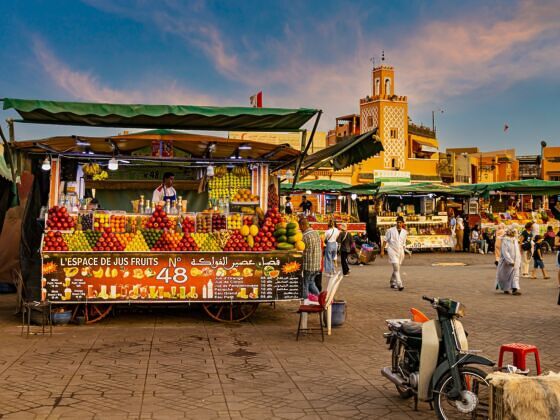

How to Find Food, Culture, and Luxury in the Heart of Marrakech
Things to do in Marrakech
Shop in the medina

Photo: Elena Odareeva/Shutterstock
The medina is located in an old part of the city at the heart of Marrakech. A palm grove surrounds the area, and the clay buildings around the marketplace, Jamaa el-Fna square, give it a distinctive reddish hue. The medina was designated a UNESCO World Heritage site in 1985, and, like it has been for centuries, the medina serves as a treasure trove of bustling souks and markets where you can shop till you drop. Shopkeepers of the outdoor stalls sell everything from clothing to leather goods to handmade carpets and more. Here, haggling is not only accepted, it’s expected. Embrace it and learn to find the way to haggle that works best for you. It all starts with the shopkeeper’s listed price. Start by cutting that price in half and slowly raising until you reach an agreement that seems fair. And remember, you can always walk away at any time.
See the largest mosque in Marrakech
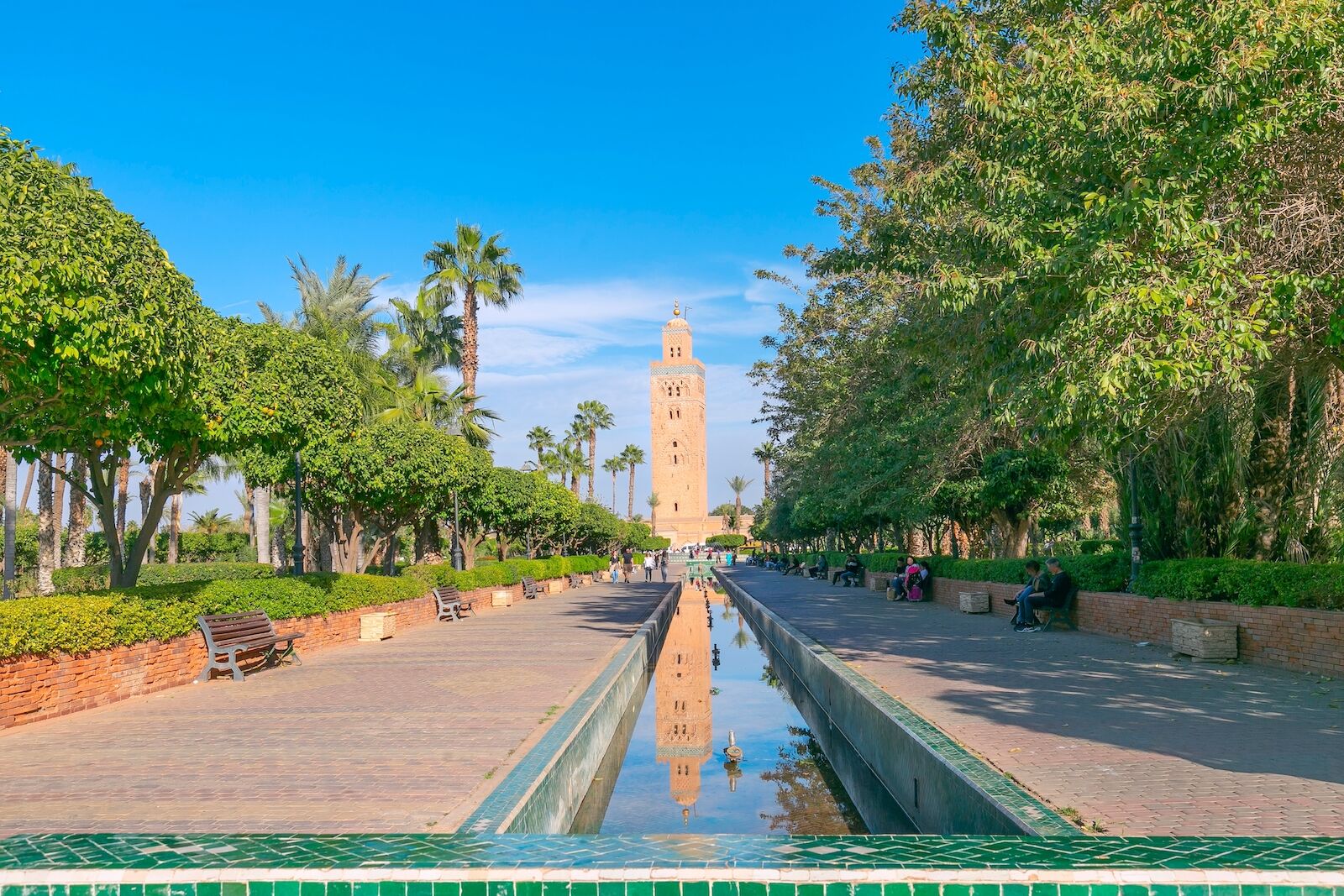
Photo: xamnesiacx84/Shutterstock
Around the corner from the medina, you’ll find architectural marvels like the Koutoubia Mosque, the largest mosque in Marrakech that is near impossible to miss thanks to a 253-foot minaret built in the 12th century. While access to the inside is strictly limited to people of the muslim faith, the outside gardens and plaza are open to everyone.
See traditional Moroccan architecture and design in a luxurious palace
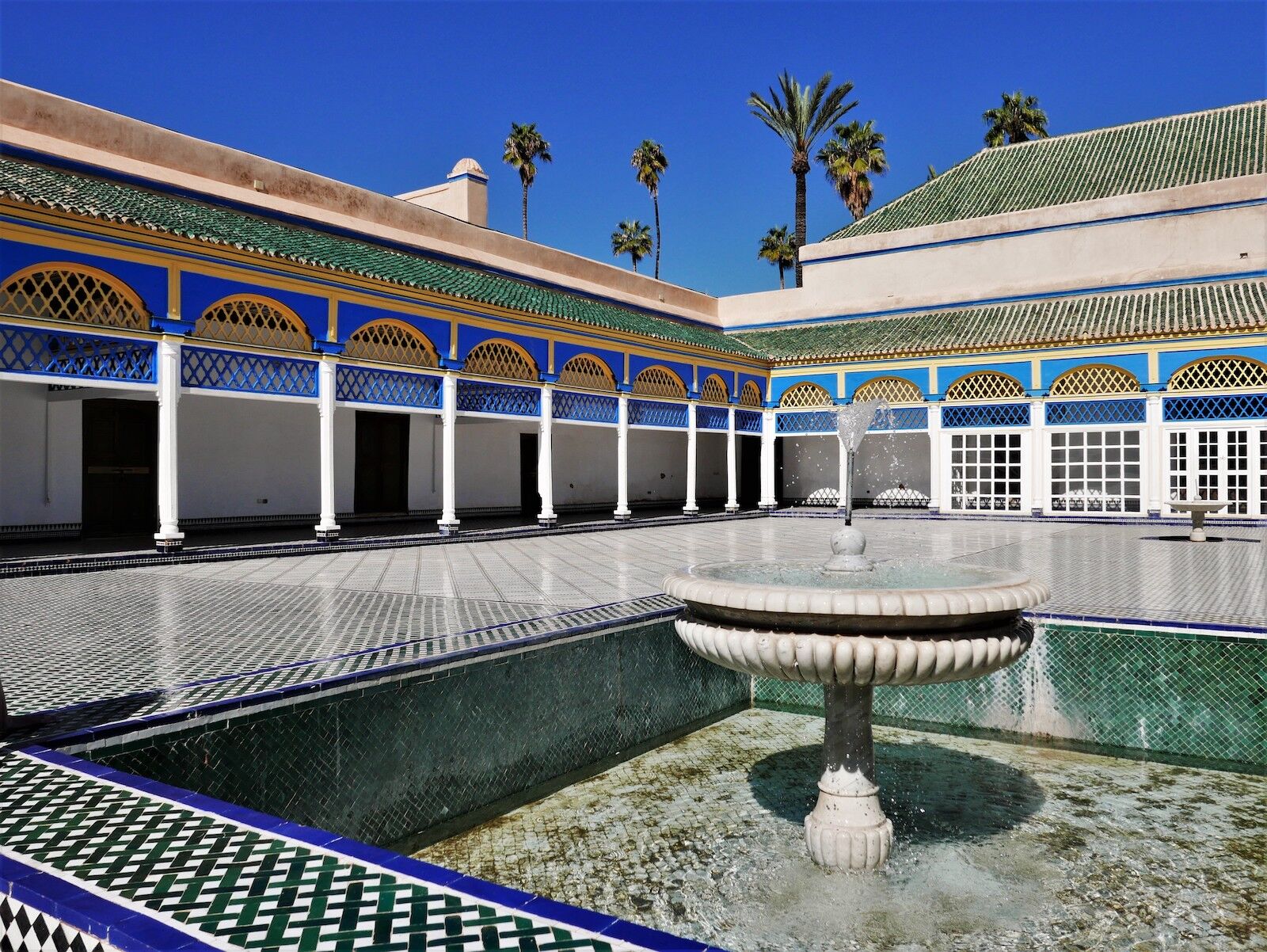
Photo: Neandro Carvalho/Shutterstock
Near the medina is the Bahia Palace, which translates to “The Palace of the Brilliant” in Arabic. This architectural wonder was built in 1894 and the building itself is complimented by brightly colored gardens and four main courtyards. The Grand Vizier of Sultan Moulay Hassan I, Si Moussa, commissioned a French architect to build the structure as a luxurious residence. Mosaics and stucco designs line the walls, while tiles reflective of traditional Moroccan design cover the floor. Parts of the palace are open for tours to see everything first-hand.
Get out into the Agafay Desert
Just a few hours away from Marrakech is the mesmerizing Agafay Desert. To visit, you’ll have to book a private or group tour, which usually comes with round-trip transportation, a night or more in the desert, and food and beverage during your stay. Tours can be booked online directly with your hotel or on commonly used excursion sites — I stayed with Le Bedouin Agafay. While the exact desert itinerary depends on the tour you choose, activities may include a sunset camel ride across the golden dunes, a bonfire with a dance performance featuring belly dancers and traditional Berber dancing, sand dunes to slide down, and a Jeep ride. Spending a night under a blanket of stars in a traditional desert camp is an experience you’ll never forget.
Falling for Moroccan cuisine in Marrakech
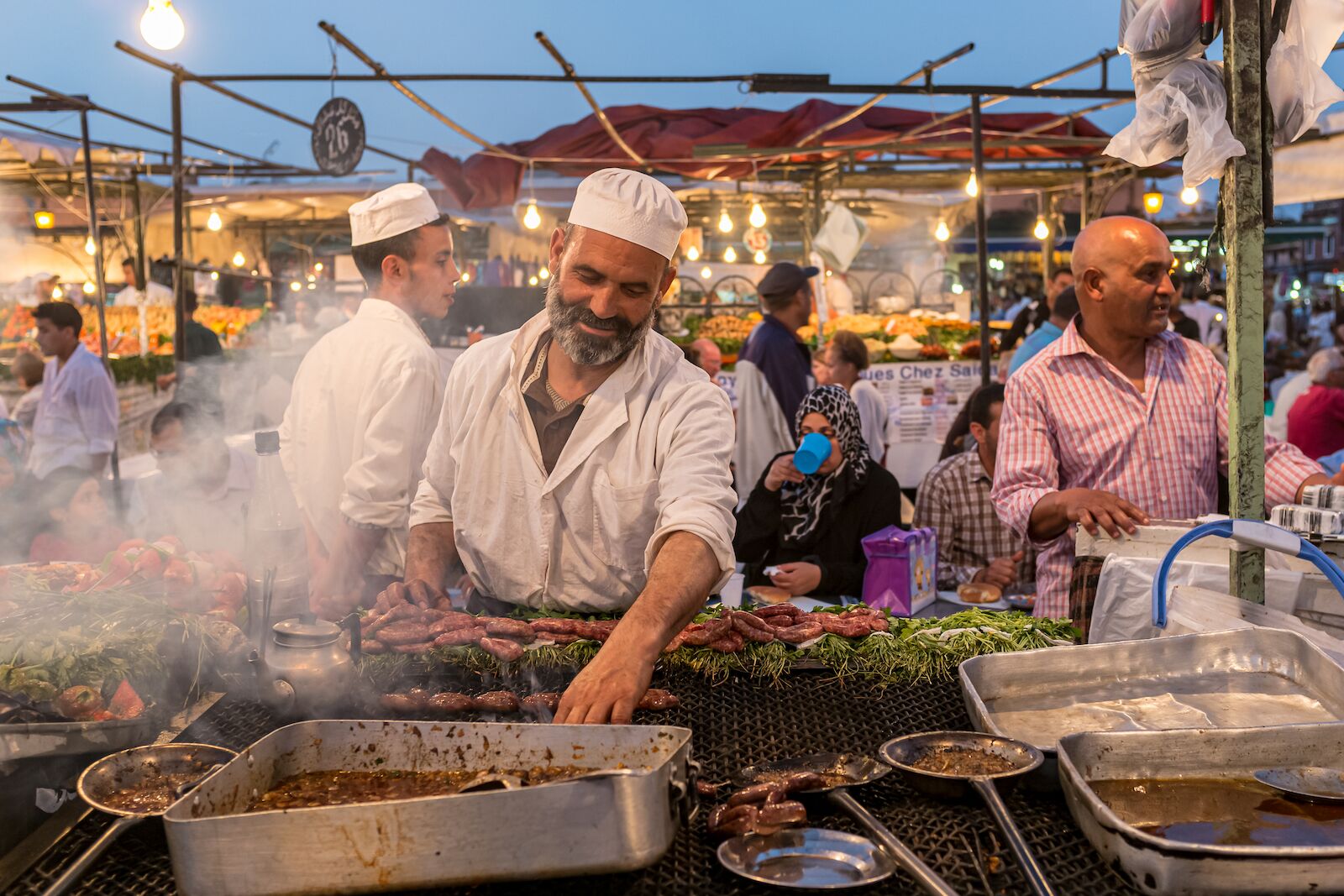
Photo: Glen Berlin/Shutterstock
Moroccan cuisine is an irresistible blend of flavors, colors, and aromatic spices. While here, try authentic Moroccan dishes such as tagine, couscous, and chicken pastilla, and savor refreshing mint tea, a staple of Moroccan hospitality. You can find the best street food Marrakech has to offer in Jemaa el-Fnaa at the food section in the middle of the square when you enter, right before the alleys where the vendors sell clothing. Be sure to explore the night food markets here as well, where an array of street food awaits.
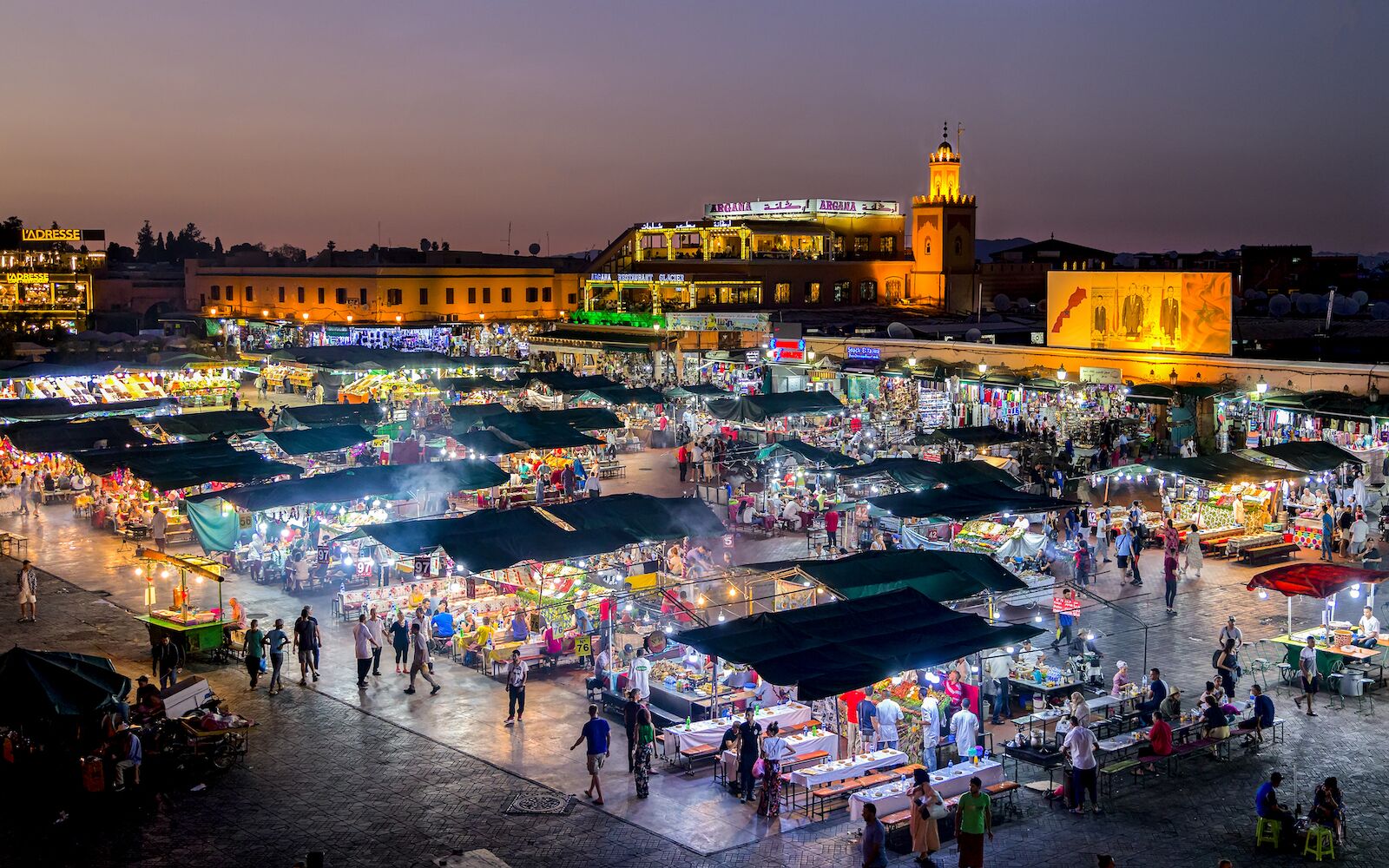
Photo: Andocs/Shutterstock
Don’t hesitate to pick up whatever catches your eye, but there are a few staples you don’t want to miss. There’s harsha, a flatbread made with semolina that’s usually paired with honey and goat cheese. Another is merguez, a kebab style stick of barbecued lamb or chicken. And then there’s babouche, a spiced snail soup known for its medicinal properties. Enjoy the freshest orange juice imaginable from one of the many stands as sunset approaches and then find a place to settle in and watch the snake charmers, street performers, storytellers, and more entertain the crowds.
Take a cooking class
Eating is one way to start to understand a culture’s cuisine. Learning how to make the food is a much deeper experience. At Atelier Chef Tarik, you can take a cooking class in a garden that covers tagine and couscous, salad, deserts, and tea.
It starts with a traditional tea ceremony typically reserved for special occasions, when the eldest person serves as tea master and everyone in the home uses the occasion to ask for wisdom on matters of concern. The tea may include verbena, geranium, rosemary, marjoram, and sage. After tea, it’s time to cook with step-by-step help and, best of all, enjoy the feast with the rest of the class afterward.
Atelier Chef Tarik: Douar dchiera aghouatim Km 22, route d’Amezmiz, located by the Medali palace hotel
Where to stay in Marrakech
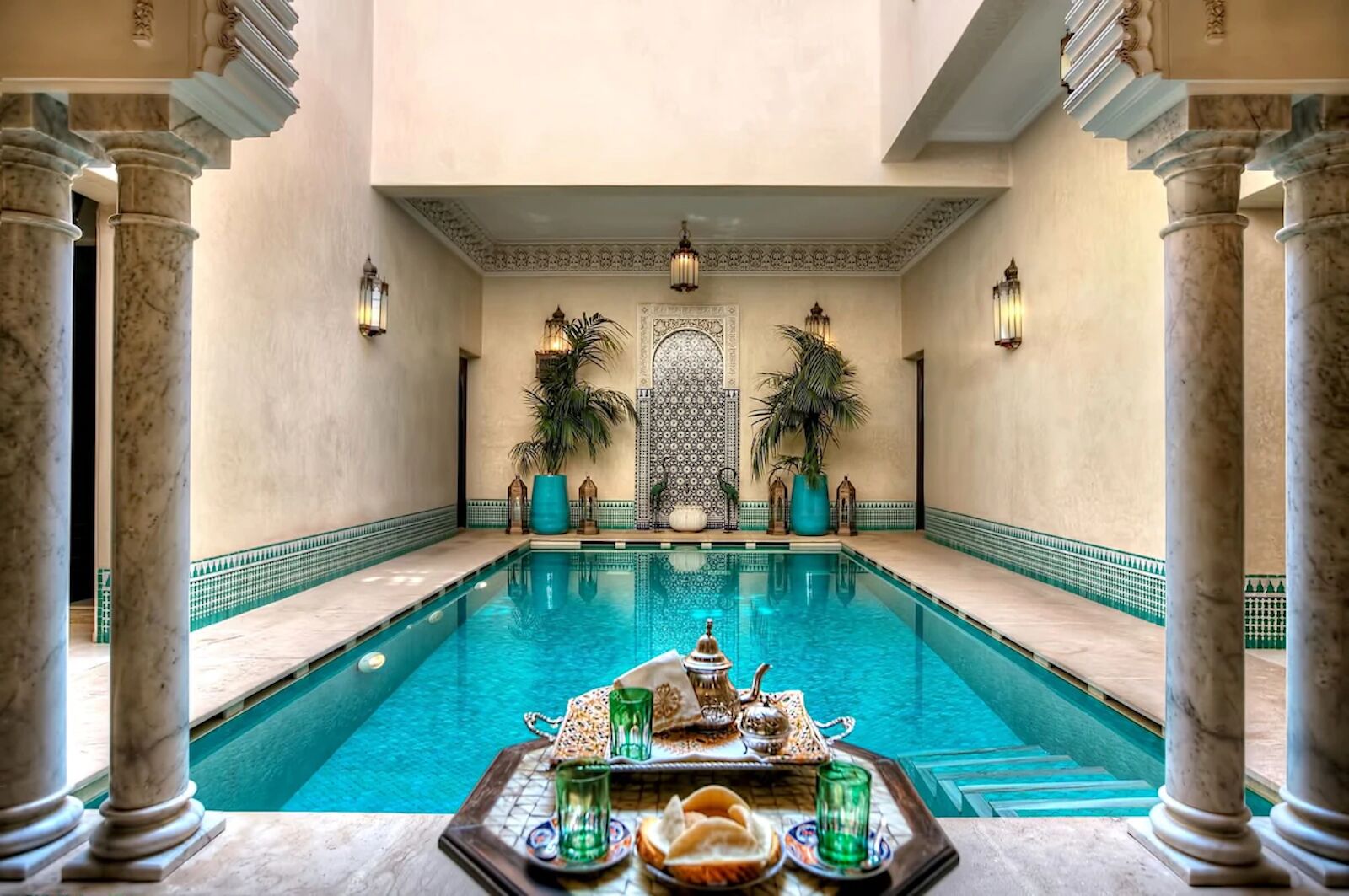
Photo: Expedia
We hope you love the spaces we recommend! Just so you know, Matador may collect a small commission from the links on this page if you decide to book a stay.
Moroccan architecture is known for its unique blend of diverse cultural influences, beautiful courtyard gardens, vibrant colors, and intricate designs. You can immerse yourself completely in the architecture by staying in a riad, which provides a tranquil oasis within the bustling city.
I stayed at the luxurious Riad Kniza, which is centrally located and just a five-minute walk from the medina. Special guests of this particular riad have included Bill and Hilary Clinton, Tom Cruise, and many more. (Spring for the special six-course Moroccan dinner at the Riad during your booking. You won’t regret it.)
A riad is a traditional house built around a courtyard that’s usually filled with a small pool and lush greenery. The courtyard’s primary purpose is to allow privacy and protection for the family, with the windows only facing inward. Today, many riads have been turned into accommodations. As a guest at a riad, you can expect to have your own room similar to a hotel, but with the familial personal attention.
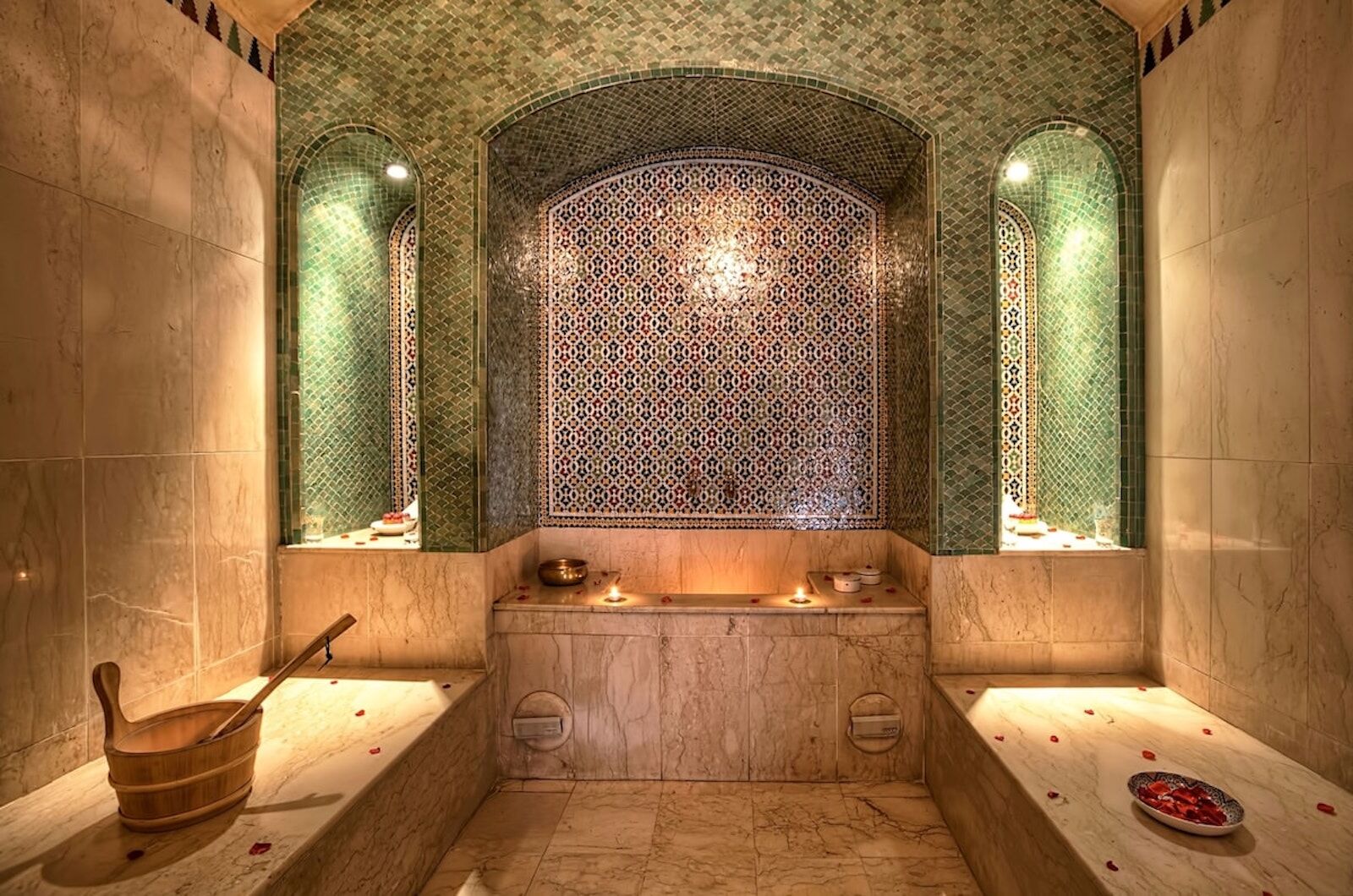
Photo: Expedia
Some riads also offer hammams, a luxury spa experience that’s not your average spa day. A hammam is a traditional steam bath that takes self-care to a new level. Step into a beautifully tiled room and be instantly greeted with warmth and the soothing scent of Moroccan oils and herbs. As you relax, someone scrubs away dead skin with a special exfoliating glove, leaving you feeling refreshed and revitalized. It’s not just about pampering yourself. A hammam is deeply ingrained in Moroccan culture, promoting cleanliness, relaxation, and a profound sense of well-being — the perfect addition to long days of haggling, eating, and exploring.